Justin Taylor's Blog, page 205
June 22, 2012
Watch the TGC Women’s Conference Live
Go here to watch the TGC women’s conference live, starting now.
Today’s schedule below, and the full schedule here. Only the main stage events are livestreamed.
June 20, 2012
Creating a Culture of Reading in the Church
The Day Francis Schaeffer’s Plane Almost Crashed in the Middle of the Atlantic Ocean
Once I was flying at night over the North Atlantic. It was in 1947, and I was coming back from my first visit to Europe. Our plane, one of those old DC4′s with two engines on each wing, was within two or three minutes of the middle of the Atlantic.
Suddenly two engines on one wing stopped. I had already flown a lot, and so I could feel the engines going wrong. I remember thinking, if I’m going to go down into the ocean, I’d better get my coat. When I did, I said to the hostess, “There’s something wrong with the engines.” She was a bit snappy and said, “You people always think there’s something wrong with the engines.” So I shrugged my shoulders, but I took my coat.
I had no sooner sat down, than the lights came on and a very agitated co-pilot came out. “We’re in trouble,” he said. “Hurry and put on your life jackets.”
So down we went, and we fell and fell, until in the middle of the night with no moon we could actually see the water breaking under us in the darkness. And as we were coming down, I prayed.
Interestingly enough, a radio message had gone out, an SOS that was picked up and broadcast immediately all over the United States in a flash news announcement: “There is a plane falling in the middle of the Atlantic.” My wife heard about this and at once she gathered our three little girls together and they knelt down and began to pray. They were praying in St Louis, Missouri, and I was praying on the plane. And we were going down and down.
Then, while we could see the waves breaking beneath us and everybody was ready for the crash, suddenly the two motors started, and we went on into Gander.
When we got down I found the pilot and asked what happened. “Well,” he said, “it’s a strange thing, something we can’t explain. Only rarely do two motors stop on one wing, but you can make an absolute rule that when they do, they don’t start again. We don’t understand it.”
So I turned to him and I said, “I can explain it.”
He looked at me: “How?”
And I said, “My Father in heaven started it because I was praying.”
That man had the strangest look on his face and he turned away.
Schaeffer draws a big-picture application:
What one must realize is that seeing the world as a Christian does not mean just saying, “I am a Christian. I believe in the supernatural world,” and then stopping. It is possible to be saved through faith in Christ and then spend much of our lives in the materialist’s chair. We can say we believe in a supernatural world, and yet live as though there were no supernatural in the universe at all. It is not enough merely to say, “I believe in a supernatural world.”
Christianity is not just a mental assent that certain doctrines are true. This is only the beginning. This would be rather like a starving man sitting in front of great heaps of food and saying, “I believe the food exists; I believe it is real,” and yet never eating it.
It is not enough merely to say, “I am a Christian,” and then in practice to live as if present contact with the supernatural were something far off and strange.
Many Christians I know seem to act as though they come in contact with the supernatural just twice—once when they are justified and become a Christian and once when they die. The rest of the time they act as though they were sitting in the materialist’s chair.
—Francis Schaeffer, “The Universe and Two Chairs”
HT: Dane Ortlund
June 19, 2012
Theological Famine Relief
Explore some ways you can partner with the new International Outreach of the Gospel Coalition to provide resources to the Global Church:
Stir up your heart for the global mission.
Network with others for the sake of kingdom collaboration.
Translate content into helpful languages to reach more regions of the world.
Give to fund and launch Theological Famine Relief Projects.
Distribute donated resources within your international field of ministry.
Read Stories about past projects.
Follow our Twitter missions channel at @TGC_IO.
Pray that the Lord of the harvest will send forth partners and laborers
Reclaiming the Christian Intellectual Tradition: An Interview with David Dockery
I am excited about the potential for the new series, Reclaiming the Christian Intellectual Tradition, edited by David Dockery of Union University. I have desired to have a series like this for years—introducing various disciplines from a Christian perspective—and I am so thankful that it has come together under his capable leadership. We recently dialogued about the idea behind it, what’s coming next, and how all of this relates to the promise and peril of Christian higher education.
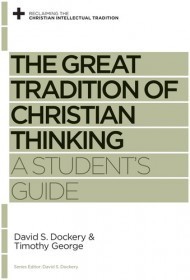 Tell us a little bit about this series and the contributors.
Tell us a little bit about this series and the contributors.
We are very excited about the opportunities associated with this new project and most grateful to Crossway for their support in this effort. The “Reclaiming the Christian Intellectual Tradition” series is designed to provide an overview for the distinctive way the church has read the Bible, formulated doctrine, provided education, and engaged the culture through the centuries. The various contributors to the series all agree that personal faith and genuine Christian piety are essential for Christian living and for service in the church.
Why do we need something like this?
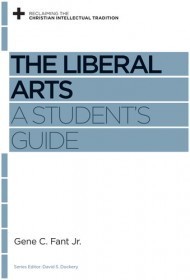 We believe that this series is needed at this time to remind ourselves and to help others recognize the importance of serious thinking about God, Scripture, and the world. We believe that Christians need a renewed emphasis on these things in order that the truth claims of the Christian faith can be passed along from one generation to the next.
We believe that this series is needed at this time to remind ourselves and to help others recognize the importance of serious thinking about God, Scripture, and the world. We believe that Christians need a renewed emphasis on these things in order that the truth claims of the Christian faith can be passed along from one generation to the next.
What do you hope this series will accomplish, by God’s grace?
It is our hope that the series will enable college and seminary students, faculty and staff, trustees, parents, and administrators, as well as church leaders to see afresh how the Christian faith shapes how we live, how we think, how we write books, how we govern society, and we relate to one another in our churches and social structures.
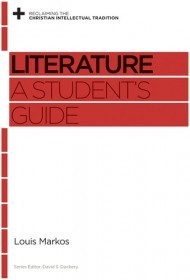 By exploring the Christian intellectual tradition and its inferences and application for all major subjects in a college curriculum, we hope to see afresh the richness of the Christian faith and its implications for the complex challenges that believers face in the world.
By exploring the Christian intellectual tradition and its inferences and application for all major subjects in a college curriculum, we hope to see afresh the richness of the Christian faith and its implications for the complex challenges that believers face in the world.
The contributors to the series will explore how the Bible has been interpreted in the history of the church, as well as how theology has been formulated. We will seek to ask:
How does the Christian faith influence our understanding of culture, literature, philosophy, government, beauty, art, or work?
How does the Christian intellectual tradition help us understand truth?
How does the Christian intellectual tradition shape our approach to education?
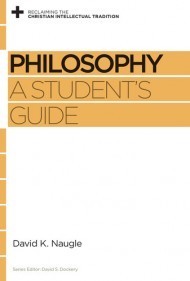 We believe that the series is not only timely but that it meets an important need because the secular culture in which we now find ourselves is, at best, indifferent to the Christian faith, and the Christian world—at least in its popular forms—tends to be confused about the Christian faith.
We believe that the series is not only timely but that it meets an important need because the secular culture in which we now find ourselves is, at best, indifferent to the Christian faith, and the Christian world—at least in its popular forms—tends to be confused about the Christian faith.
In order for us to reclaim and advance the Christian intellectual tradition, we must have some understanding of the tradition itself. The series, which will include at least fifteen volumes, will seek to explore this tradition and its application for our twenty-first century world.
Which books are available so far, and what are some of the books in the pipeline?
We are pleased that three books in the series have already been published.
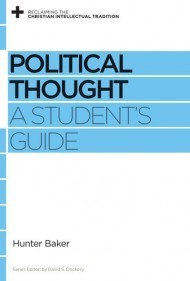 Timothy George and I wrote the first volume called The Great Tradition of Christian Thinking.
Timothy George and I wrote the first volume called The Great Tradition of Christian Thinking.
Gene Fant, chief academic officer at Union University, has written a marvelous volume on The Liberal Arts.
Louis Markos, the fine C. S. Lewis scholar and professor of English Literature at Houston Baptist University, is the author of the work on Literature.
We will publish two additional volumes this fall.
David Naugle, author of the masterful work on the history of worldview thinking, has written the work on Philosophy.
Hunter Baker, well known for his award-winning work on secularism, is the author of the volume on Political Thought.
We hope to publish at least three or four volumes in 2013, 2014, and 2015. We are excited about the forthcoming contributions to the series by Philip Ryken (Christian Worldview Thinking), Michael Wilkins and Erik Thoennes (Biblical and Theological Studies), Ben Mitchell (Ethics and Moral Reasoning), Edd Noell (Economics), Paul Munson and Joshua Drake (Music and Art), John Woodbridge and Greg Thornbury (History), John Bloom (The Sciences), and Read Schuchardt (Media and Journalism), among others.
Who is the target audience?
The series is particularly designed for Christian students and others associated with college and university campuses, including faculty, staff, trustees, parents, and other various constituents. We believe the series can serve the academy and the church and help strengthen the partnership between the two in our shared calling and service.
Who else might read these books besides college students? Why should others take a look at these volumes?
I think that the books can be quite valuable for pastors and church leaders. At the heart of this work is the challenge to prepare a generation of Christians in all spheres of life to think Christianly about church, culture, and society. We hope that readers will better understand the breadth and depth of the Christian intellectual tradition. The works are designed to be accessible and understandable in order to provide a framework to help introduce Christ-followers to the great tradition of Christian thinking, seeking to highlight its importance for understanding the world, its significance for serving both church and society, and its application for Christian thinking and learning. We trust that the series will be a starting point for exploring important ideas and issues such as truth, meaning, beauty, and justice. We are certainly encouraged by the initial warm response that the series has received from a wide-ranging group of scholars and academic leaders.
I know this is an impossibly broad question, but as you look into the future, what excites you and what concerns you about the direction of Christian higher eduction?
I am excited about many aspects of the future of Christian higher education and simultaneously concerned about the numerous challenges that we face.
I remain hopeful about the number of campuses who are seeking to take seriously the call to reclaim, apply, and advance the Christian intellectual tradition. Last year, the journal First Things recognized about 25 Christian colleges and universities that were seeking to faithful in their commitments to academic excellence and to Christian worldview thinking. I trust this number will expand in days ahead.
Unfortunately, many institutions take an either/or approach to this matter, thinking that they must choose between academic excellence or Christian commitment. The result has been a long list of institutions, since the days of Harvard University, who have walked away from their Christian commitments and their connections to the churches. On the other hand, there are some institutions that have focused only on Christian faithfulness and authentic piety, but have avoided serious academic work. We must avoid this “either/or” approach to higher education. Likewise we need to avoid models that separate head and heart, faith and reason, or Christian tradition and intellectual inquiry. We need a coherent approach to Christian thinking and living that seeks to bring these matters together rather than separating them from one another.
Moreover, we must recognize that the changes in higher education seem to be ever-shifting in terms of philosophy, methodology, and delivery system possibilities. It is impossible to keep up with these changes, but we must continue to monitor these trends and provide education that is faithful to our heritage as Christ-centered institutions while seeking to be ever more connected to the reformulations of the world in which we now find ourselves. These changes are manifold and can be summarized in terms of technology, education delivery systems, and the interface between traditional education and the rest of society in terms of internships, classroom consulting, service learning, distance learning, and strategic institutional alliances. All of these cause us to rethink traditional classroom boundaries.
Special interest groups continue to offer pressure on Christian institutions of higher education to conform on issues that will compromise our mission. We must anticipate that the issues of sexuality and sexual freedom, including same-gender unions, could possibly impact federal funding or accreditation matters. The right to hire will likely be the most important legal issue that Christian colleges and universities will face in the years ahead. These issues, along with the growing economic pressures faced by every campus, will make the challenges of providing Christ-centered higher education in this century more challenging than ever before.
With these factors in mind, we must think wisely, carefully, strategically, and creatively as we look toward the future to become more thoroughly mission driven. I am hopeful that Christian institutions in North American and particularly those in the Global South can work together to serve church and society, providing thoughtful foundations for us to engage the culture and envision a blessed and kingdom-focused future for the days ahead.
What Is Wrong with Performance-Enhancing Drugs? A Thought Experiment with Robots and Baseball
 With performance-enhancing drugs and their alleged abuse still in the news, it may be helpful to return to this thought experiment by Justin Barnard, associate professor of philosophy at Union University:
With performance-enhancing drugs and their alleged abuse still in the news, it may be helpful to return to this thought experiment by Justin Barnard, associate professor of philosophy at Union University:
Imagine attending a baseball game in which no human beings were participants. Imagine sitting for several hours watching a pitching machine throw to a mechanical arm swinging a bat. Can you honestly imagine being spellbound by such a game? Would you pay top dollar for seats behind home plate?
My hypothesis is that while a thoroughly-perfected game of robotic baseball might commandeer an initial measure of fascination, it would simply fail to captivate our imaginations over time. Moreover, our intuitive reluctance in being enthusiastic about this imagined scenario is telling, not simply as an indication that something is amiss in the use of performance-enhancing drugs, but more importantly as a clue to a proper understanding of human nature.
That we find the prospect of robotic baseball uninteresting should not lead us to conclude that the skills of baseball are in no way machine-like. Indeed, the fact that baseball players hone their skills, often by means of machines in connection with machine-like repetition, is evidence of the degree to which the cultivation of such skills can be perfected by treating them mechanistically. To treat a skill mechanistically is simply to analyze it into its constituent parts with a view toward training one’s body to perform the most efficient and effective sequence of parts with as much precision and accuracy as possible. Think of Tiger Woods’ own success in rebuilding his golf swing.
Still, the fact that athletes achieve a certain measure of success by means of treating skills mechanistically should neither lead us to conclude that the perfection of athletic ability is a function of being as machine-like as possible nor that the use of performance-enhancing drugs is merely a means of honing one’s skills that is morally equivalent to repetition of practice. For in the case of baseball, the whole point of using performance-enhancing drugs is to hit the ball harder and hence, farther. But while the ability to hit the ball well (e.g., hard) is a good, it is only one good, among many, in the game of baseball considered as a whole. And among those for whom it is morally bothersome, this is precisely what bothers fans when heroes are exposed for having violated the purity of the game.
Specifically, the use of performance-enhancing drugs in baseball violates the integral relationship that exists among all of the game’s goods considered as a whole by virtue of employing means (i.e., performance-enhancing drugs) which, by their very nature, treat a single good as though it were an exclusive end in itself (i.e., the good of hitting the ball a very long distance or even more basically, the good of raw athletic power or strength). By their very nature, performance-enhancing drugs work so as to maximize a single good (e.g., muscles that are bigger, faster, stronger, etc.). Moreover, the use of such drugs in baseball (or in any other sport for that matter) implicitly treats the single good at which the drug aims as though it were the most important or only good of the game considered as a whole. That this is false about home-run-hitting is illustrated by the robotic baseball thought experiment. If merely hitting the ball (very far!) were the most important or only good of the game of baseball considered as a whole, why not get rid of the players and replace them with machines? After all, we already have the technology to create machines capable of hitting baseballs farther than most steroid-enhanced players alive!
Of course, the thought experiment helps us to realize that home-run-hitting, exciting and important as it is, is merely one good among many in the game of baseball considered as a whole. Activities like the use of performance-enhancing drugs trouble us morally—not merely because of the conventions of the game—but more significantly because they violate the overarching goodness of the unity of the game’s goods, considered as a whole.
You can read the whole thing here, where he looks at cognitive-enhancing drugs and arguments by those who defend them based on a pragmatic, utilitarian view of human nature.
Did the Apostle Paul Really Write All the Letters Attributed to Him?
Some critical scholars suggest that the apostle Paul didn’t really write some of the letters that are now ascribed to him. Ray Van Neste, writing the introduction to 1 Timothy in the ESV Study Bible, has a concise explanation of why the pseudonymity solution is untenable:
It is problematic to argue that these works were written under a false name since the early church clearly excluded from the apostolic canon any works they thought to be pseudonymous. While critics point to the common practice of pseudonymous writing in the ancient world, they usually fail to point out that this practice, though common in the culture, was not common in personal letters, and was categorically rejected by the early church (cf. 2 Thess. 2:2; 3:17; also Muratorian Canon 64-67; Eusebius, Ecclesiastical History 6.12.3). Tertullian (c. A.D. 160-225) wrote that when it was discovered that a church elder had composed a pseudonymous work, The Acts of Paul (which included a purported Pauline letter, 3 Corinthians), the offending elder “was removed from his office” (On Baptism 17). Accepting as Scripture letters that lie about their origin is also a significant ethical problem. Thus, there is a good basis for affirming the straightforward claim of these letters as authentically written by Paul.
In addition to the external evidence (e.g., whether or not pseudonymity [false naming] or pseudepigraphy [false attributing] were accepted practices in the first centuries), Van Neste also points to the internal evidence in 2 Thessalonians where Paul’s comments are relevant. These verses are worth quoting:
2 Thessalonians 2:2: “[Do] not to be quickly shaken in mind or alarmed . . . by . . . a letter seeming to be from us. . . .”
2 Thessalonians 3:17: “I, Paul, write this greeting with my own hand. This is the sign of genuineness in every letter of mine; it is the way I write.”
Given statements like these, it seems logically and morally incompatible to hold to pseudonymity / pseudepigraphy and the ultimate authority of God’s word containing no deception or error.
For more on this, see D.A. Carson’s essay, “Pseudonymity and Pseudepigraphy,” in Dictionary of New Testament Background, ed. Craig A. Evans and Stanley E. Porter (Downers Grove: IVP, 2000), 857-64.
June 18, 2012
What Is the Difference between the “Active” and the “Passive” Obedience of Christ?
A common mistake is to gloss Jesus’ “active obedience” as his “sinless life,” and his “passive obedience” as his “atoning death.” In other words, Jesus was active in his living and suffered in his dying.
But that’s not historically what the terms mean—though some popular defenders of the Reformed view occasionally make this mistake, whether through ignorance or oversimplification.
Historically, the Reformed understanding is that Christ’s “passive obedience” and his “active obedience” both refer to the whole of Christ’s work. The distinction highlights different aspects, not periods, of Christ’s work in paying the penalty for sin (“passive obedience”) and fulfilling the precepts of the law (“active obedience”).
Louis Berkhof puts it in his standard Systematic Theology:
The two accompany each other at every point in the Saviour’s life. There is a constant interpretation of the two. . . .
Christ’s active and passive obedience should be regarded as complementary parts of an organic whole. (pp. 379, 380)
John Murray, in Redemption—Accomplished and Applied, expresses it quite clearly and goes into more detail:
[We cannot] allocate certain phases or acts of our Lord’s life on earth to the active obedience and certain other phases and acts to the passive obedience. The distinction between the active and passive obedience is not a distinction of periods. It is our Lord’s whole work of obedience in every phase and period that is described as active and passive, and we must avoid the mistake of thinking that the active obedience applies to the obedience of his life and the passive obedience to the obedience of his final sufferings and death.
The real use and purpose of the formula is to emphasize the two distinct aspects of our Lord’s vicarious obedience. The truth expressed rests upon the recognition that the law of God has both penal sanctions and positive demands. It demands not only the full discharge of its precepts but also the infliction of penalty for all infractions and shortcomings. It is this twofold demand of the law of God which is taken into account when we speak of the active and passive obedience of Christ. Christ as the vicar of his people came under the curse and condemnation due to sin and he also fulfilled the law of God in all its positive requirements. In other words, he took care of the guilt of sin and perfectly fulfilled the demands of righteousness. He perfectly met both the penal and the preceptive requirements of God’s law. The passive obedience refers to the former and the active obedience to the latter. (pp. 20-22)
Put another way, Jesus’ so-called “passive” and “active” obedience were lifelong endeavors as he fulfilled the demands and suffered the penalties of God’s law, and both culminated in the cross. I would argue that the New Testament clearly teaches the lifelong passive obedience of Christ (his penalty-bearing work) and the lifelong active obedience of Christ (his will-of-God-obeying work), culminating in the cross. We then receive the benefit of this through the imputation of the obedience of Christ (the reckoning of Christ’s complete work to our account when we trust in him for salvation and are united to him).
But it’s not uncommon to hear some people say, “Scripture only teaches the imputation of Christ’s passive obedience, not his active obedience.” Another complaint goes like this: “Such fine distinctions are owing more to systematic theology than to the authorial intent we’re after in exegetical theology.”
But here’s the irony in it all. By arguing that it is only Christ’s passive obedience that is imputed to our account, they are the ones making a distinction that can’t be found in the biblical text.
The Reformed folks argue for both-and, not either-or. In the NT Christ’s righteous work is of one cloth: it’s always “obedience unto death.” In other words, one cannot separate Christ’s fulfillment of God’s precepts from Christ’s payment of the penalty for failing to obey God’s precepts.
What God has joined together, let no man separate!
Is the Eternal Generation of the Son a Biblical Idea?
In recently reading through a very readable translation of Gregory of Nazianzus’ five five theological orations and the other Cappadocian fathers, I’ve begun to wonder how anyone could reject the eternal generation of the Son if one understands the idea correctly and examines the biblical evidence. Unfortunately, a number of evangelical scholars have reached a different conclusion. But I hope that the traditional view continues to carry the day. Without it, I’m not sure how we keep the designations “Father,” “Son,” and “Spirit” from being functionally arbitrary in their eternal relations.
In an earlier post, I linked to a couple of quotes from Gerald Bray and D. A. Carson supporting the biblical basis for the doctrine.
Shortly thereafter Steve Holmes linked to my brief piece, suggesting that my framing of the issue as an exegetical one was a good example—or bad example!—of evangelical biblicism. (The post was merely about method, not about the doctrine, as Steve believes in the eternal generation of the Son and thinks it is virtually essential to Trinitarianism.) Steve’s knowledge of historical theology dwarfs mine, but I would disagree when he says “I am fairly sure that no-one in the fourth century thought they could read eternal generation off the pages of Scripture.” I would suggest that the Cappadocians, for examine, did think it was a biblical position that could be demonstrated through texts (though of course that does not preclude the necessity of theological synthesis and application, and of finding the “sense” of the whole of Scripture).
Keith Johnson—author of a very good book applying Augustine’s trinitarianism to questions of pluralism and world religions—has a post at the Gospel Coalition on the eternal generation of the Son that applies to this discussion. He writes, “Although one might assume that Augustine’s commitment to eternal generation is merely rooted in a handful of dubious “proof texts,” nothing could be further from the truth. This doctrine is rooted in a rigorous and comprehensive Trinitarian hermeneutic.” You can read his whole post for a summary of how Augustine sought to demonstrate this doctrine from Scripture.
For those who want to investigate this issue further, Kevin Giles has a new book out on the theology and history of this doctrine: The Eternal Generation of the Son: Maintaining Orthodoxy in Trinitarian Theology (IVP, 2012). Giles has written several books on the Trinity, seeking to advance an egalitarian interpretation on manhood and womanhood and arguing that it is illegitimate to appeal to the roles within the Godhead as an example of submission and equality. He has tangled with Robert Letham on these issues, but on this they are united about the correctness of this doctrine and its importance for the church. For this reason, Letham penned the foreword.
Finally, for any interested in a wonderful overview of “Scripture, History, Theology, and Worship” regarding the Trinity, I cannot recommend too highly Letham’s The Holy Trinity (P&R, 2004). It’s an outstanding resource.
June 17, 2012
Free Lectures and Classes from Westminster Theological Seminary on iTunes
Click here to access classes and lectures from the past (e.g., Cornelius Van Til, John Murray) and the present (e.g., Sinclair Ferguson, Carl Trueman, Scot Oliphint, Richard Gaffin, etc.).
I’ve previously mentioned similar iTunes collections from Covenant Theological Seminary and Reformed Theological Seminary.
Justin Taylor's Blog
- Justin Taylor's profile
- 44 followers





